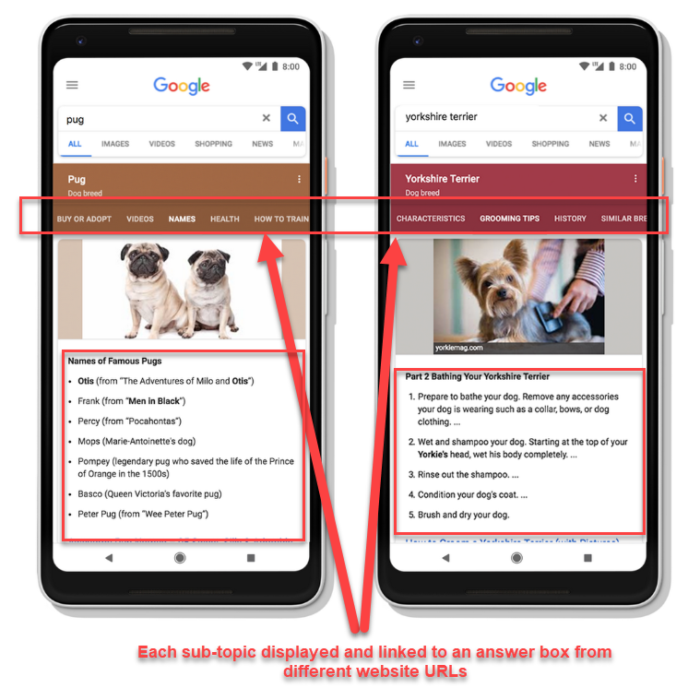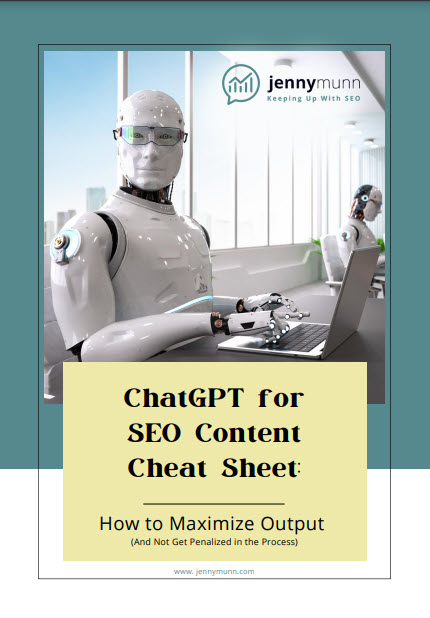Thanks to the frenetic pace of technology influencing and evolving our daily behaviors, we marketers must help get our houses in order—or risk becoming irrelevant.
In the world of search, how exactly do we accomplish that?
Below are 5 quick, actionable to-dos for understanding how to improve and modernize your digital marketing strategy:
- Be present and visible during the big and small moments
- Go beyond intent to buy
- Go deeper, get specific, get more in depth, and win in the rankings
- Create a frictionless experience
- More options + extensive searching = the need to instill confidence
How to Improve Your Digital Marketing in 5 Easy Ways:
1. Be Present and Visible During the Big and Small Moments
As Google did with the release of the Google Home Mini, they did a “moment mapping” exercise: “we outlined all the big and small moments where we thought our product could be useful — everything from sporting events like the World Series to holidays like Thanksgiving to small daily moments like making a grocery list.”
What are all of the moments your product will be useful? Those are the moments you want to be present and visible. For example:
- serve contextual ads so that you’re at the top of Google when there is a search related to your product or service
- show up with a video on YouTube addressing a pain point or issue your market faces
- have a helpful blog ready to go and ideally ranking in Position 0 or high on Page 1
I love this exercise from Forbes – “Think back to the last question that popped into your mind. What movie is that actor from? When will it stop raining? What technology exists to make my life as a mom easier? Chances are when that question popped up, you reached for your smartphone — because, well, it’s smarter than we are and it holds all the answers.”
Is this exercise harder than you think? I can believe it. At a conference I spoke at a few years ago for private school directors, I polled conference attendees asking them “what was the last thing you Googled?” Unsurprisingly—but disappointingly for me—attendees hardly remembered. The reason being, Googling and searching is so unconscious and ingrained in our daily behavior, it’s hard to recall specifics.
2. Intent-Based Marketing: Going Beyond Intent to Buy
Intent is one of the most important concepts for modern marketers to understand. Intent marketing is defined as “any kind of marketing that aims to meet an end user or prospect’s intent. That is, what they really want or need in that moment.” As WordStream so wisely put it: “As marketers, however, we shouldn’t just care about intent to buy. Responding to audience intent in the right way, wherever they are in the “buyer journey,” is what makes people love your brand.”
Deciphering your customer’s intent can tell you things like:
- What is the mobile experience they’re desiring and expecting on our site?
- Video, Image, Text, or Audio: what content format should you produce?
- What SERPS features you should be taking advantage of?
- What offer and CTA (call to action) should you be making to your audience?
- What keywords should you pursue?
- What are the multiple touch points and channels you should optimize?
Here’s the problem with intent-based marketing: most users are not poised to purchase. They’re most likely browsing. And what makes it more challenging is they’re switching between channels and devices as they look for what they need.
Marketer’s today must serve both audiences:
- Assess what to do with qualified audiences who have no intent to buy (yet), find ways to stay in front of them, craft offers that will pique their interest for where they are, and nurture them when interest and intent starts to heat up
- Identify the higher-intent prospects, make sure your brand is part of the initial conversation, position your organization to win over the competition, and move them through the journey as efficiently as possible
3. Go Deeper, Get Specific, Get More In Depth, and Win in the Rankings
Google is organizing information differently to more intelligently improve relevance. They’re doing this with presenting sub-topics that stem off a single query. Take a look:

Google plans to expand this feature to more topics as well.
And this is not just relevant for mobile. Answer Boxes and People Also Ask are popping up regularly and frequently, offering perfect chances to rank content higher up than ever. Video and image results are commonly present in searches. Go deeper into context and more comprehensively to win in the rankings today. Make sure you’ve applied foundational mobile, technical, and on-page best practices to earn those coveted positions.
4. Create a Frictionless Experience Online
The data is in: users want a frictionless experience when engaging with brands. What does that mean to you and how do you make that statement more actionable? I love the approach HomeAway shared in an interview with Google. They started with what users didn’t want:
- Irrelevant, slow-loading landing pages
- Annoying pop-up ads
- A cumbersome checkout process
It’s the small things. Nothing makes me happier than when mobile forms give the right input types. For example, when a field automatically capitalize my letters when I’m punching in a flight confirmation number, saving me from having to repeatedly push the up arrow from my iPhone keyboard; or when a numeric keyboard pops up (instead of the standard alphabetic keyboard) when I need to type my phone number or credit card number into a field. All of these add up to an improved experience.
Begin brainstorming what users do NOT want, and do so objectively. Rely on your tools and look at what story the data is telling about customer and prospect experiences.
A frictionless experience also means understanding engagement, conversions, and purchases are not always going to happen on your website. One of the most significant shifts in SEO over the years is that Google has been designing their experience away from “10 little blue links” (to put it mildly). Searchers are increasingly not amenable to clicking on and visiting your site until much further down the funnel. Be on the platform they are, engage with, and deliver seamless experiences away from your website.
5. More Options + Extensive Searching = the Need to Instill Confidence
If you’re in the business of selling something, you must go above and beyond to win the game of making your shopper feel confident and at ease every step of the way. As one Google Researcher put it, “with so many options and so much information online, consumers increasingly can and have to make decisions based on differences beyond quality, price, and basic features. The deciding factor is often personal criteria for that product and how it solves their individual needs.”
The results people are often unconsciously looking for when making buying decisions:
- Authentic ratings and reviews
- Videos that show the products in action
- FAQs answering the questions you didn’t even know you had
- Having a personality/tone/voice that aligns with every brand interaction
As I mentioned in my 2019 SEO Trends post recently, “modernize your content creation efforts by comprehensively answering the query and question behind the keyword. Also, go a step further and predict what questions and objections the searcher may have in their head as they’re reading the content.”
Improve Your Digital Strategy Today: Bringing It Home
Easy enough, right? Let’s recap these 5 tips:
- Be present and visible during the big and small moments
- Intent-Based Marketing: Going Beyond Intent to Buy
- Go deeper, get specific, get more in depth, and win in the rankings
- Create a frictionless experience
- More Options + Extensive Searching = the Need to Instill Confidence
We marketers have work to do, and I hope this has spurred ideas for you to take back to your team. Which do you need to prioritize?
Jenny Munn
Latest posts by Jenny Munn (see all)
- Four 2024 SEO Planning Tips for World Domination - November 16, 2023
- SEO Planning Tip: Why You Need a CYA Clause - November 3, 2023
- How Long Does SEO Take to Show Results? (Updated for 2023) - August 9, 2023


